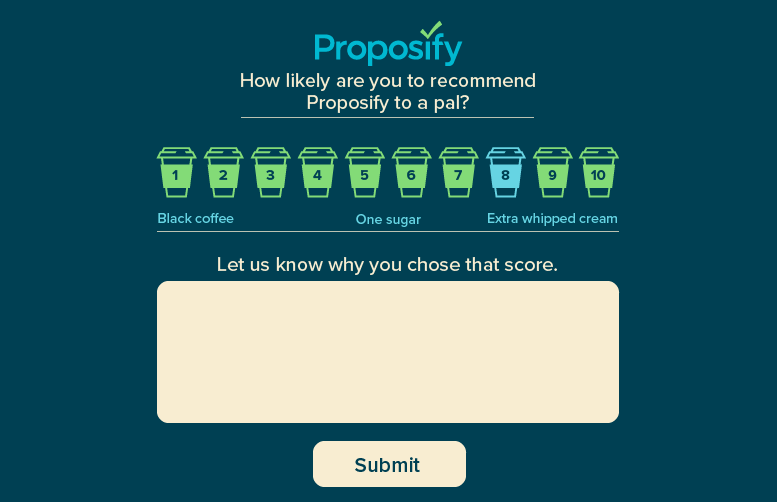Why Your Agency Needs a Client Retention Strategy
April 16, 2019Last updated on October 1, 2024

Retaining clients will help scale your agency much more effectively than trying to acquire new ones. So how do you keep the clients you have and maintain a happy and mutually beneficial client/agency relationship?
Let’s say you sold a $10,000/month retainer for 6-12 month contract. If your goal is to simply get to the end of the contract, deliver the promised results, and send the client packing so you can move on to the next thing, you’re thinking about your business the wrong way. You need a client retention strategy.
Obviously, your goal should be to keep your clients past their contract and have them renew year after year.
Maybe you don’t sell retainers but instead, do project-based work. You don’t want to build an app or website for a client once, and then never hear from them again; you want to upsell them on ongoing maintenance, new features, or cross-sell them on complementary services.

The biggest and best agencies in the world have incredibly high client retention rates year after year with many Fortune 100 brands, which in part explains how those agencies grew so big and so profitable.
What is a good client retention rate?
Well, in 2001, 2002, and 2003 it was reported that global agency DDB retained 98% or 99% of clients. In 2014, it was reported Grey had a 95% retention rate. Pretty impressive numbers, especially since we all know the client/agency relationship can be a challenging one.
For smaller, more specialized agencies, it’s often quite a different story. It’s not uncommon for small shops to burn through their entire client list in one year, requiring them to constantly chase after more new business and more new clients.
If you fall into that second category, you need to think seriously about a client retention program.
When a client returns to do business with you, you don’t need to write a proposal, and you don’t need to worry about pitching or onboarding. You just start working with them on the new project, and everyone knows what to expect. To really build your agency, you need to get better at client retention.

How to develop a client retention strategy
Know your churn
Start by measuring client churn on a monthly, quarterly, or annual basis. How many clients don’t renew their contract, or actively tell you they are cancelling their retainer? The percentage of existing customers who cancel or leave your agency equates to your churn rate.
If you have 100 retainers already in place for the year and sell 50 new ones that year, but 50% of the existing ones cancel or don’t renew, you’ve got a major business problem, a leaky bucket.
1. Choose the right clients from the beginning
We’ve covered things clients do that piss off agencies and how to fire clients. If you don’t want to keep a particular problem client, you don’t need to put in the work to keep them.
But, it’s better to proactively let them go than to passive-aggressively deliver shitty work and lacklustre service as a way to get rid of them. That approach will only damage your reputation in the market.
Clients are your currency; they are the lifeblood that keeps you in business, so you need to work to keep most of them. If you’re choosing the right clients from the beginning and saying no to leads who aren’t a good fit, then you should be trying to keep ALL of your existing clients.
2. Think like a customer success department
Customer success is an emerging field and most SaaS companies have a customer success department.
Customer success differs from customer support in that where customer support reactively answers questions and helps customers work through bugs or issues, customer success is all about proactively reviewing accounts to ensure that customers are experiencing success using your product. The goal of the customer success department is to stop a client from churning long before they’re even thinking about it.
To accomplish this, customer success assigns a customer health score based on a variety of factors. Is a customer actively logging in and using the product? Which features are they using? Has the customer completed onboarding? Have they achieved the results they’re looking for, and the ones you promised them? Are they paying on time? What’s their NPS score?

All of these factors may not apply if you run a service based business like an agency, but many of them would be applicable. You can send clients an NPS survey to see how likely they are to recommend your agency to a friend or colleague. Or you can simply pick up the phone to call your clients every quarter to see if they’re experiencing success working with your agency and if there are any problems.
Regardless of the kind of industry you’re in, sit down and figure out how you can measure the health of your accounts. Make it the responsibility of your account department to measure and learn from customer success experiences.
That way, if a client is in the yellow or red zone, you can see the writing on the wall and work to keep the account before it’s past the point of no return. I guarantee most agencies are NOT doing this.
Train, empower, and hold your account management department responsible for client success. Account management is the ideal department in any agency to handle this. It’s the account manager’s job is to make sure clients are satisfied and seeing success with the agency, to look for upsell/cross-sell opportunities, and to foster new work with existing clients, directly in that order.
3. Set expectations and deliver
It should go without saying, but the #1 way to retain a client is to deliver more value than you charged.
But how do you quantify your value and communicate it?
It all happens before, during, and after the sales process. If you used value-based pricing, then your client should already be set with the proper expectations for what you’re going to deliver.
The hard part comes when your agency needs to fulfill on what you promised. If you sold the idea that within six months you’d increase the number of sales or leads by 50%, worth say, $1M to the client, then if you come up short, it’s going to be tough to convince the client to stick with you. You’ll end up looking like a cost centre to the client, one that’s easy to cut from their expense budget.
"The best way to lose a client is to overpromise and underdeliver."
That way if you come up short, you look like you did what you said. But if you absolutely crush it by delivering $500,000 more than you said you would, your client will be tripping over themselves to renew their contract at the end.
4. Demonstrate your value through monthly reporting
You can’t expect that clients will automatically attribute your work to the results they’re seeing. You need to prove over and over why you’re worth that monthly payment.
Reports can be a pain in the butt, and your client might not even read them in detail, but just receiving the report and knowing that you’re making progress and being accountable can make a client happy.
Clients enjoy seeing a report in their inbox at the first of every month letting them know what the agency accomplished with their account over the past weeks. The report should be delivered consistently, without the client needing to ask for you for it.
So, what does a good client report look like? It depends on the service you offer, but you should have a polished, branded reporting template that makes it easy for the strategist on your team to slide graphs and pie charts into.
If you’re an inbound marketing agency, the report might highlight the content you produced that month, the traffic and other view stats, and the number of leads all of this activity brought the client.
Blatant product placement announcement: you can use Proposify to create and send monthly reports to your client, see when they open it, and where they look. Using our Streams feature you can organize your client reports so they don’t get mixed in with your proposals and other sales documents.
5. Over communicate
Communication is the most important way to make clients happy, and that’s on the shoulders of the account manager.
Some account managers make the mistake of only communicating when there’s some progress or an update, but that’s a mistake. You should communicate all the time. Communicate when there’s nothing to say, over communicate.
"Over communicate with your clients Even when there’s nothing to say, stay in touch.”
Think of a relationship with a friend or spouse. Are you just going to talk to them when you have some big revelation or a crazy story? Most of your communication is probably, “Hey, how are you?” Or maybe, “I saw this article today and thought about you.”
Clients get nervous if they don’t see anything being done, and assume that nothing is. Call or email them at the beginning of the week to let them know what the team is working on and what they’re aiming to accomplish. At the end of the week, tell them what your team did, and whether they’re on schedule, ahead, behind, or if they’re waiting on the client to proceed.
Communicate with your client even when there’s bad news. Client retention doesn’t mean that you can’t ever say no, push back, or tell the client something they don’t want to hear. I’d rather be told bad news than be told nothing at all.
Communicate the way your client wants Some account managers prefer to put everything in email, but if your client is the type that never checks email because they’re buried with 1,000 emails per day, then that’s not an effective form of communication. Use Facebook Messenger, Slack, text, Skype, Basecamp or whatever is the best way to reach them (hopefully not fax!).
6. Use an authentic, personal touch
“People will forget what you said. People will forget what you did. But people will never forget how you made them feel.”
— Maya Angelou
When hiring account managers, you want to put a higher value on finding people who are likeable, witty, and empathetic rather than on people who are ultra type A, uber-organized and masters of marketing. You can hire other people on your team to fill in the roles of project manager and strategist. Account managers need to be people-people first and foremost.
Account managers need to be empowered and incentivized to pleasantly surprise their clients regularly, sending them birthday or holiday gifts, buying them relevant books, taking them out for lunch, or just a regular phone call to check in and offer some guidance above and beyond what they’re technically paying for.
Is the client organizing or sponsoring an event? Buy a ticket and attend. Is the client putting on a fundraiser? Donate to that cause. Show that you care beyond just the parameters of your project agreement.
It’s all about reciprocity. If someone does something nice for us, we’ll probably do nice things for them (and vice versa). One study found that when restaurants servers brought candy when they gave diners their bills, tips went up. And when the servers came back afterwards with extra candy — obviously delighting the customers — the tips got even bigger.
At Ritz-Carlton, each staff member is allowed, without approval from their general manager, to spend up to $2,000 on a guest. It doesn’t mean they need to spend $2,000 on every guest, it means they can, if a good opportunity presents itself, to make the guest a guest for life.
“The concept is to do something, to create an absolutely wonderful stay for a guest. Significantly, there is no assumption that it’s because there is a problem. It could be that someone finds out it’s a guest’s birthday, and the next thing you know there’s champagne and cake in the room. A lot of the stuff that crosses my desk is not that they overcame a problem, but that they used their $2,000 to create an outstanding experience.
There are stories about hiring a carpenter to build a shoe tree for a guest; a laundry manager who couldn’t get the stain out of a dress after trying twice, flying up from Puerto Rico to New York to return the dress personally; or when in Dubai a waiter overheard a gentleman musing with his wife, who was in a wheelchair, that it was a shame he couldn’t get her down to the beach. The waiter told maintenance, who passed word, and the next afternoon there was a wooden walkway down the beach to a tent that was set up for them to have dinner in. That’s not out of the ordinary, and the general manager didn’t know about it until it was built.”
7. Properly transition clients
The last thing a client wants is to be wined and dined for their business and then as soon as the first cheque clears they’re pawned off to team members they don’t know and forgotten about. Get the owner of your agency and/or new business manager to check in regularly as well.
Often, clients are buying the person who originally pitched them and closed the business, so they want to see more of that person. Check in from time to time. Proactively reach out a month or two before their contract renews, and maybe take them to dinner.
At 30%, agencies have high staff turnover rates.
When a key employee leaves your agency, like a creative director or an account manager, it often signals a red flag to your client and increases the likelihood of churn. When I ran an agency, I regularly received calls from new clients who were fed up with their current agency because they had been handed over to their third account person that year.
Naturally, you should start at the root of the problem: why are so many employees leaving your company? I’ve covered how to keep talent from turning over before, and I had a smart guest on our podcast talk about winning lifetime loyalty from your employees, so I won’t reiterate all the points here. But, if employee retention is a problem for your agency, it’s something you should put a lot of focus and energy in solving first.
Even with the best retention strategies in place, employees WILL eventually leave your company.
If an account manager moves on to greener pastures you need to be 100% in defense mode to keep their key accounts. The outgoing account manager should transition each client to the new account manager.
As the owner, director of accounts, or the business development person who closed the account, you should be calling up each of their clients to tell them the news personally over the phone, not in an email. If they are local to you, arranging a coffee or drink after work wouldn’t hurt either.
You need to assure them that their business is important to you and that they won’t experience any interruption in quality, tell them who’s going to take over their account and sing that person’s praises - frame it up a positive change. Let them know you’re here to talk if they have any concerns as you move forward.
8. Don’t overcharge your existing clients
If a client feels they’ve been overcharged, they’ll quickly take a pass on renewing with your agency and never return. Don’t nickel and dime them in the short term on small tasks when there’s a lot more revenue you can extract from them in the long run.
"Don’t nickel and dime clients on small tasks when there’s more revenue you can extract from them in the long run.”
A lot of agencies lose money on the initial project with a client because they underestimated the time it would take, or they didn’t manage scope creep properly, and then they try to make their money back on the next project by overcharging. Don’t make it the client’s fault that you messed up your profitability.
Instead, estimate the project properly the next time, communicate to the client why it might cost more the second time, and price by value. Rinse and repeat.
Conclusion
Retaining clients is easier, more cost effective, and less stressful than spending the time and resources to hunt down new leads, qualify them, and then work to convert them into paying clients. I’m pretty sure that old expression, ‘A bird in the hand is worth two in the bush’, was coined by the managing director at an ancient agency who developed the very first client retention program.

Co-founder and CEO of Proposify, and co-host of the Levership podcast. Outside of Proposify, he plays in the band Club Sunday, who put out their first LP in 2023 and enjoy playing live shows every chance they get. Follow him on LinkedIn.



